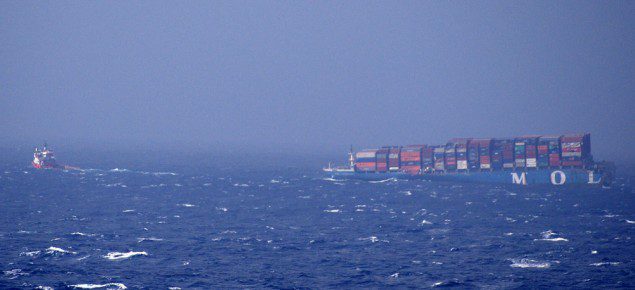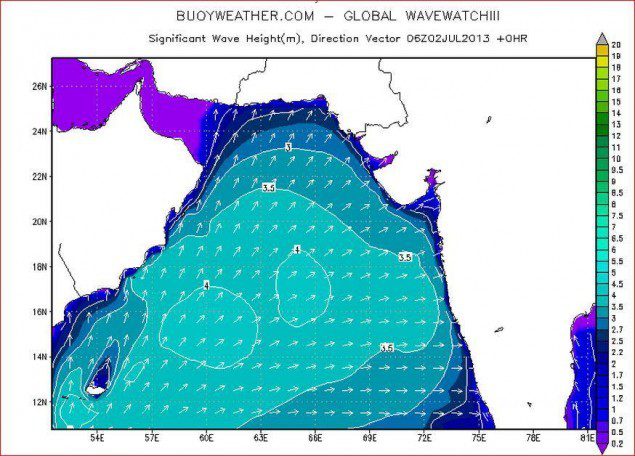Trump China Tariffs Set to Unleash Supply Shock on U.S. Economy
President Donald Trump’s tariff onslaught has roiled Washington and Wall Street for nearly a month. If the trade war persists, the next upheaval will hit much closer to home.

Fore section of MOL Comfort pictured shortly after breaking apart July 17. Image credit: MRCC Mumbai
UPDATE (10 JUL): MOL Comfort Fore Section has Sunk
UPDATE 3 July: Mitsui O.S.K. Lines (MOL) has announced that the towing line has been reconnected to the fore section of the MOL Comfort and the tow has resumed.
Previous:
Mitsui O.S.K. Lines (MOL) announced this morning (2 July) that the fore section of the MOL Comfort has broken free from it’s towing wire while in “adverse” sea conditions.
It’s a bit of a setback for the salvors, however considering the situation, it’s perhaps not all that unexpected.
I spoke with veteran tugboat sailor Paul Berdy this morning to get a bit of perspective. He notes that, “When you make up the tow from a salvage operation, the tow points don’t actually exist, so you’re kind of shooting from the hip. It’s not like you have ABS-inspected towing bits installed on the vessel, so you’re rigging on the spot to make this happen.”

MOL didn’t mention how or where the towing wire became disconnected, but Berdy brings up a valid point. The fore-part of the MOL Comfort is being pulled from it’s stern, if you can really call it that, which is really nothing more than a bulkhead that used to be inside the ship.
UPDATE (3 JUL): New photos MOL Comfort was actually NOT being towed stern first.

The salvors, when they came on scene, had to find the strongest part of that bulkhead, and either cut in, or install towing padeyes on to the port and starboard side of the vessel and then rig up a towing bridle to that.
It’s not like these guys were rigging up a towing bridle for a small barge, they had to tow 500 feet of containership, plus cargo, backwards through heavy seas. The gear needed for that is heavy and awkward, and had to be installed on a ship with no stern, or crane.
“With something that massive, and with that much windage, it’s a shit-fight,” notes Berdy. “You have to run slow, and then then next thing you know you’re getting snatched backwards.”
Snatching is where the tow gear is stretched out to its maximum length before it pulls the tug backwards, loading up the engines and the towing gear. It typically happens when the tug and the tow are out of phase in a wave train, that is when the tug is going down a wave and the tow us going up a wave. “It’s a dangerous situation and things can, and will fail,” adds Berdy.
Why not tow it from the bow?
Some are questioning why the tow wasn’t conducted from the bow, where there are suitable bits to rig a towing bridle to, and in a manner in which the ship was originally designed.
At first glance, it seems odd that the salvors chose to tow the ship backwards, but it’s likely that the bow, in its present downward trim, is likely acting more like a rudder. Towing the ship from the bow, with the stern out of the water, may likely make the ship extremely difficult to maneuver in a straight line.
The following is a graphic depicting the current sea conditions in the Indian Ocean.


Sign up for gCaptain’s newsletter and never miss an update

Subscribe to gCaptain Daily and stay informed with the latest global maritime and offshore news


Stay informed with the latest maritime and offshore news, delivered daily straight to your inbox
Essential news coupled with the finest maritime content sourced from across the globe.
Sign Up